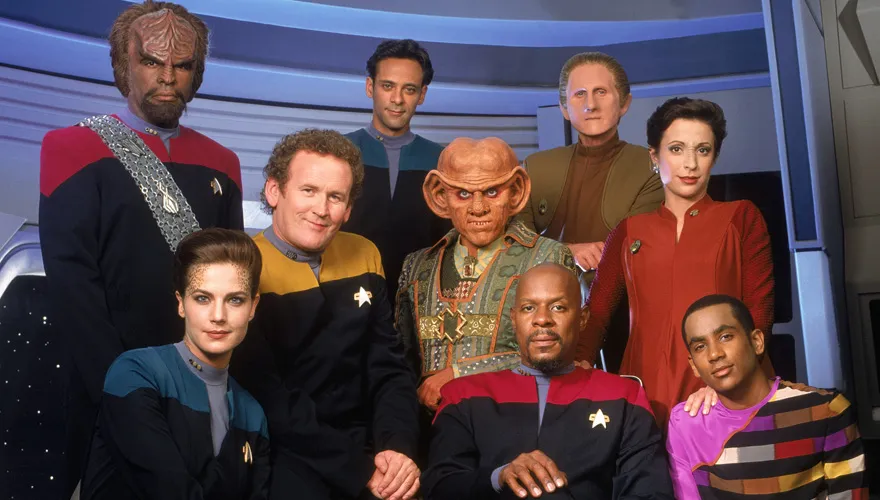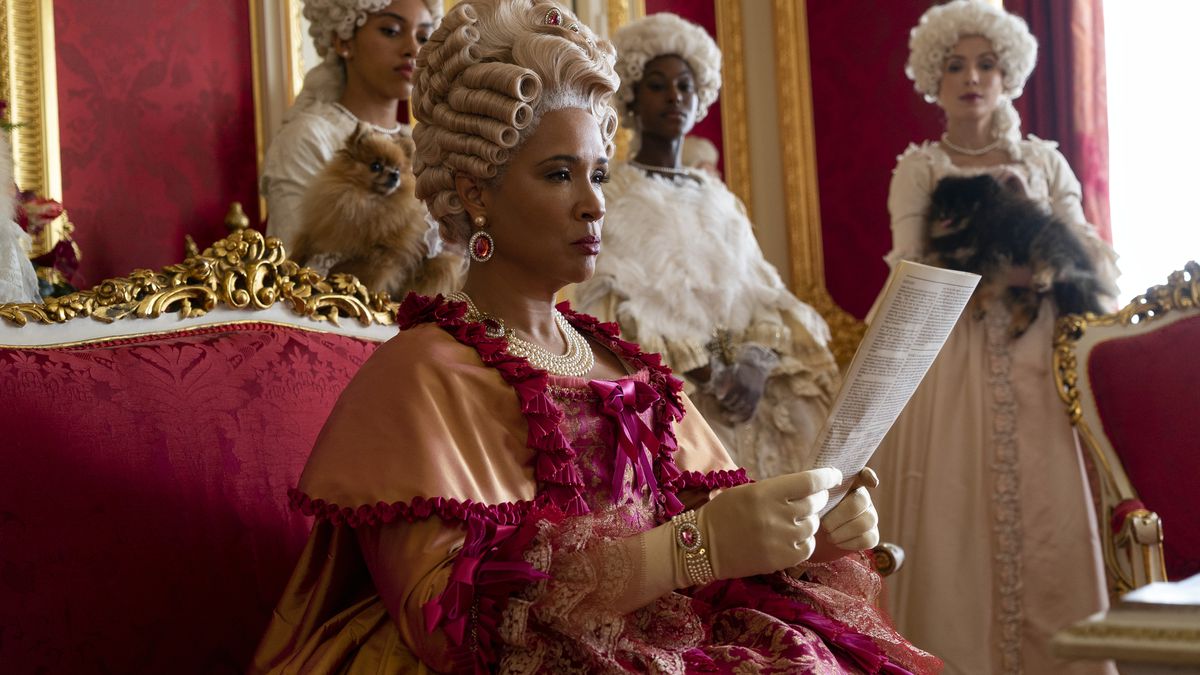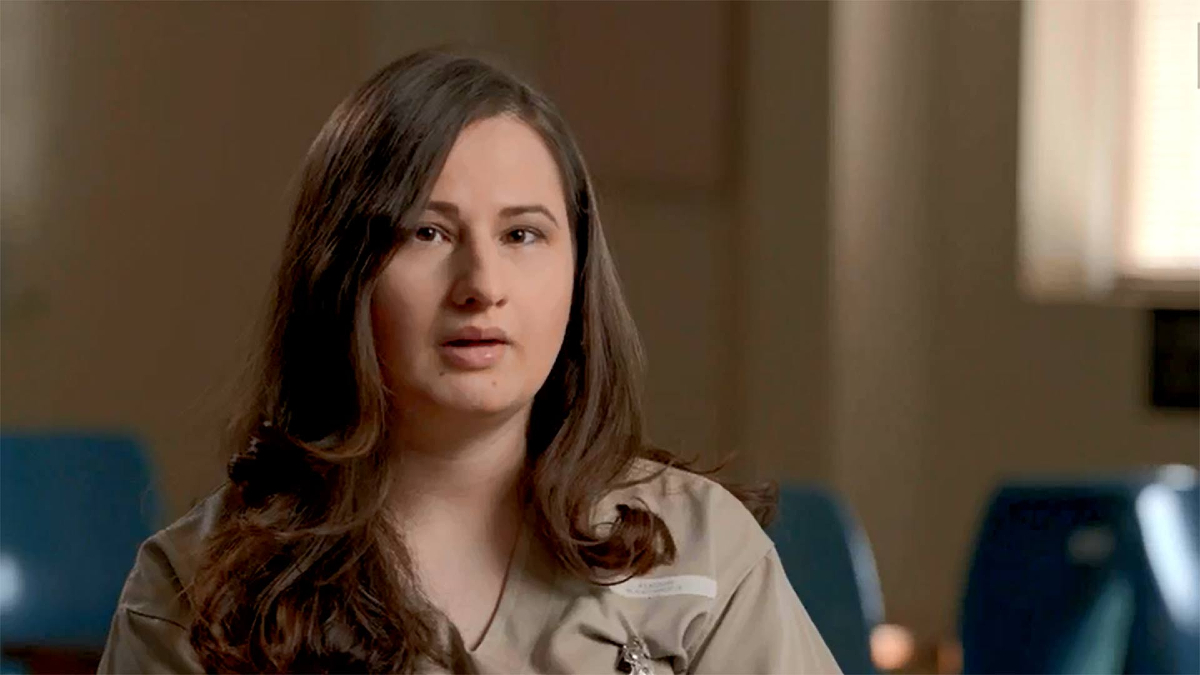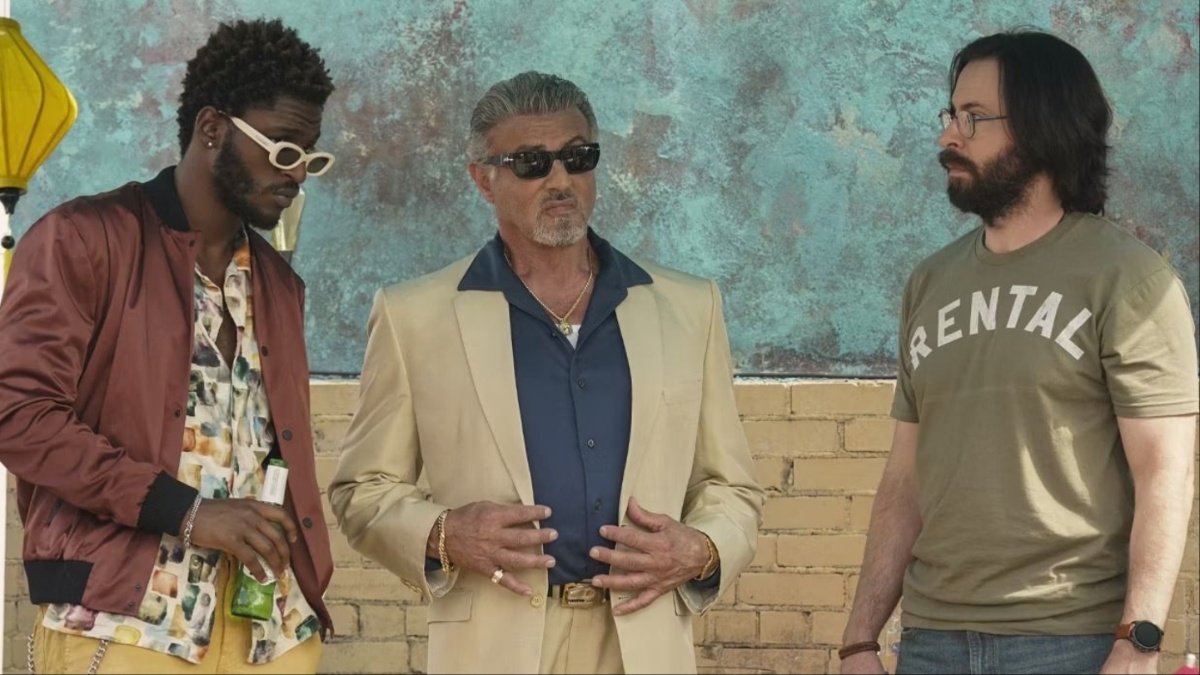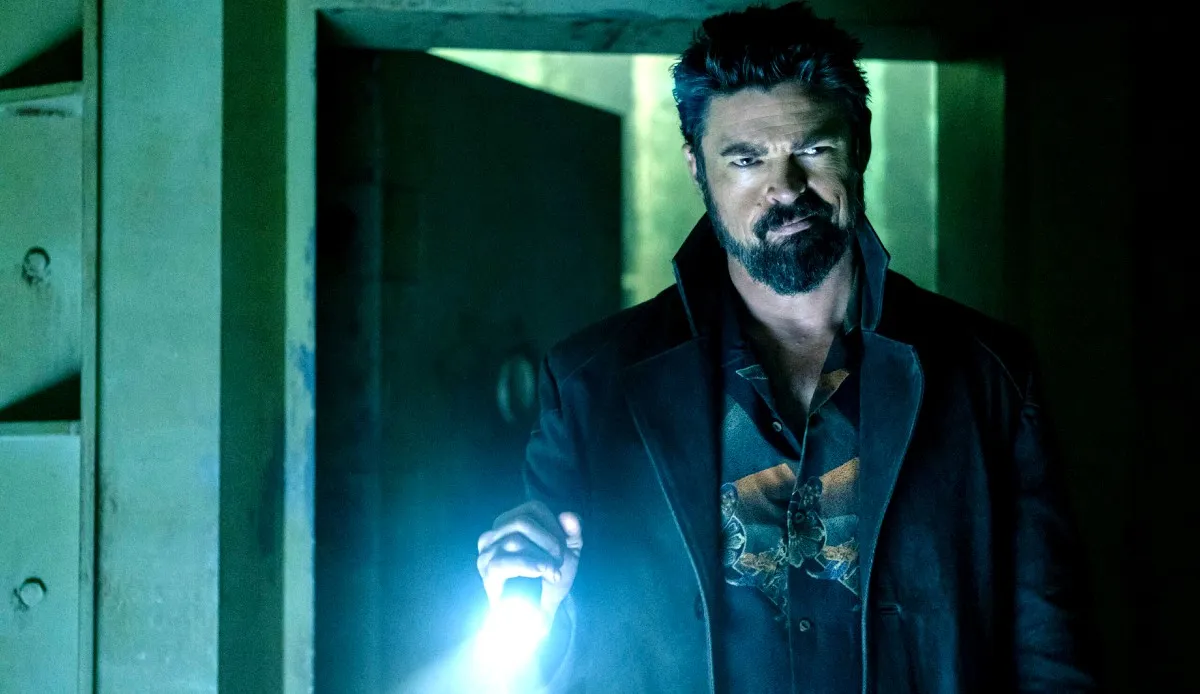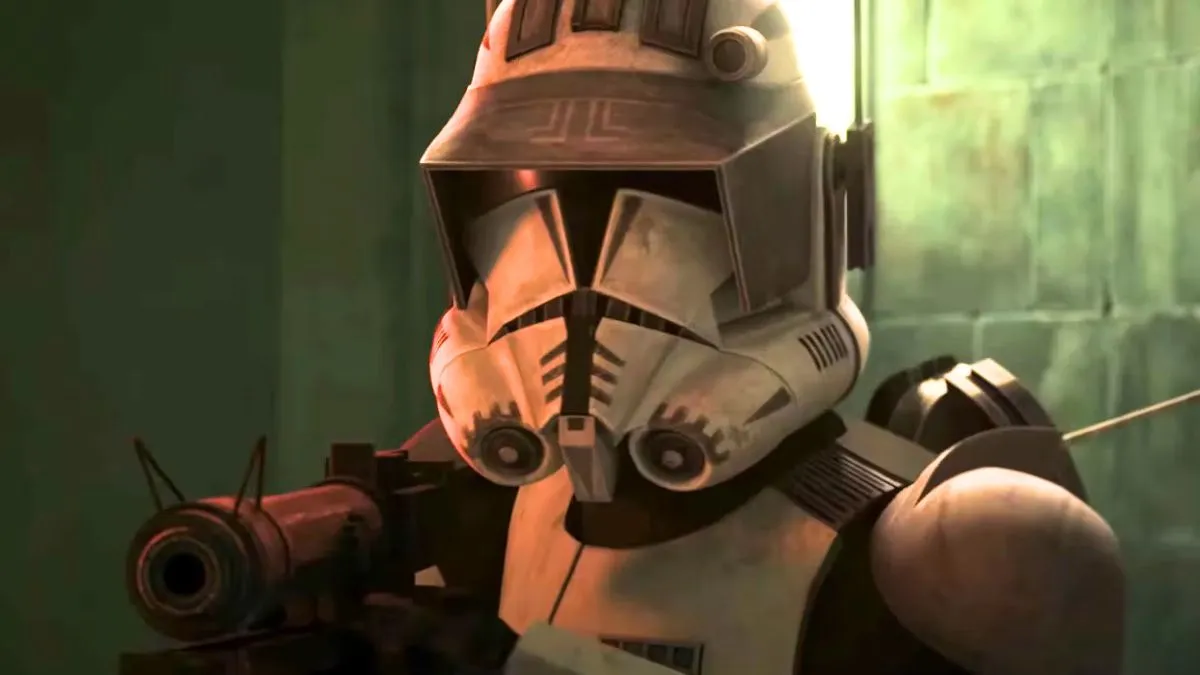“Ours is the one that is almost like a Russian novel,” says Rene Auberjonois of Deep Space Nine, which is the best Star Trek series, and is now officially old enough to rent a car.
Constable Odo is correct. Deep Space Nine is the best Star Trek for reasons I have long maintained. Even those of you who would challenge me to a duel for the honor of The Next Generation will admit that DS9 is unparalleled in the Trekverse in terms of episodic storytelling. That’s because the show pretty much single-handedly introduced long, complex, interlocking narratives to Star Trek.
It was a struggle to introduce those multifaced story arcs, even if they now feel like DS9’s trademark: in a feature in Variety that features cast reunion pictures that will make fans weak-kneed—witness Terry Farrell (Dax) and Michael Dorn (Worf) cuddling, Marc Alaimo (Gul Dukat) and Jeffrey Combs (Weyoun, everyone else) lounging side by side, or Cirroc Lofton (Jake Sisko) hugging Penny Johnson (Kasidy Yates)—we learn how the show’s creatives developed its unique storytelling, and hear from some of our favorite cast members.
That particular style of storytelling did not sit well with everyone, though. Behr says when he tried to introduce interpersonal conflict during his time working on “TNG,” “Star Trek” creator Gene Roddenberry “handed me my head.”
“We all wanted conflict, but I just got into his crosshairs,” he says.
Roddenberry died in 1991. He had given his blessing to development of “DS9,” but held no sway over it.
“DS9” allowed “Trek” writers the chance to delve into that conflict like never before. Over the course of its run, the show tackled complex subject matter including the ethics of war, faith, cultural identity and the often subtle distinction between a freedom fighter and a terrorist in dark and surprising ways that the previous two series had not.
Bless Gene Roddenberry for the gift of Star Trek, but I am thankful to DS9 showrunner Ira Steven Behr and creators Michael Piller and Rick Berman for the enduring space opera that they gave us. As the article points out, in its time DS9 never achieved the ratings or pop culture notoriety of TNG. But it was more reflective of the real world in which it was made, and it featured complicated, flawed heroes who made mistakes and had real weaknesses, alongside equally developed villains who could feel sympathetic, and delicious characters who dwelled in gray spaces of morality, like Garak and Quark. Not everyone loved this “Russian novel” style of Star Trek, but those of us who did were hooked for life.
“What evolved was kind of a third-child mentality of not being everyone’s cup of tea, but the people who liked it were passionate about it and really enjoyed the neurotic quality to our characters,” says René Auberjonois, who played security chief (or Constable) Odo. “Every single character on ‘Deep Space Nine’ had some deep psychic problem they had to work out. It was being developed at the time of the riots in Los Angeles and the burning of South Central. And also politically Bosnia and Yugoslavia. Everything was falling apart. There was a real darkness, and I think that deeply influenced the style of the show.”
As it turns out, that darkness and moral ambiguity was light years ahead of its time.
I loved hearing Nana Visitor’s take on playing the uncompromising Major Kira Nerys, who was unlike any woman we’d seen on Trek before—indeed, unlike most women seen on television in those days, period. Visitor hesitated to take the part, but in the end knew she couldn’t resist the thrill and challenge of Kira.
“By the end of the call, [Rick Berman] had convinced me that I did want to be a part of it whether it impacted the rest of my career or not,” she says. “When I read the script, I thought, ‘That’s a man’s role. That’s not for me.’ Yet it was all I wanted to do. I hated every part that I had to play where I was chastising a husband or getting upset about the carpet. And I did a lot of those. Any time I could get my teeth into something, that was my flow state. That’s why I was an actor. Major Kira was like Disneyland for an actor.”
Fan reception to the character, and to the show as a whole, ran hot and cold. Previous female “Star Trek” characters had been helpmates — a switchboard operator (Lt. Uhura in the original series), a therapist (Counselor Troi in “Next Generation”), a healer (Dr. Crusher in “The Next Generation”). None had been a war veteran with emotional skeletons.
TNG was particularly skimpy in giving its female characters important things to do (especially in its first seasons), and ToS often had its ladies looking, well, skimpily dressed. In contrast, DS9 was particularly bold in its early feminism: we got Major Kira, and its other main female character was the brilliant and beautiful Jadzia Dax, wise with the wisdom of the many lifetimes her Trill symbiont had lived. Dax gambled like a Ferengi and fought like a Klingon, and she kissed a woman on television in 1995, two years before Ellen DeGeneres came out. I looked to Dax as a role model of what a woman could be and what she could do when she never apologized for who she was.
Visitor relates that Kira met with quite a bit of pushback. She pushed back herself, and Kira’s legacy remains:
“Some people in the ‘Star Trek’ world were like, ‘That’s not what a woman in “Star Trek” should be. That’s the wrong thing to be teaching,’” Visitor says. “But what I saw her as was a woman of appetite and gray area — lots of gray area. Very fallible, but growing and trying. And that’s all over television now.”
In a sense, the character was a precursor to Sonequa Martin-Green’s protagonist Michael Burnham on “Discovery.”
We can see the imprint and impact of DS9 all over television these days, but it’s also exciting that the series has found a new audience via streaming services, as well as allowing old fans the pleasure of a rewatch. In a way, it’s living out a second life online in a form that’s most conducive to enjoying it—those intricate narrative threads can be grasped all at once, no longer spaced out weekly across six years.
When I watched DS9 in the olden days, I was so desperate to “keep” episodes for continuity that I would tape them on VHS, of which there are still shoeboxes full somewhere in a closet. The idea that I could somehow have access to the entirety of DS9’s seven seasons at the touch of a button would have broken my brain when I was 12 and in love with Jadzia Dax.
It’s clear that the show is only strengthened in reach and popularity by this ready access. It used to be difficult for new viewers to jump midseason into those tangled plotlines and multilayered characters if you hadn’t seen what came before. But now you can start from the beginning and binge to your heart’s content.
“What I think is happening now is that since it is on Netflix and streaming, people are watching it and seeing the whole story,” Auberjonois says. “People love to stream the original episodes and all the other versions, but ours is the one that is almost like a Russian novel. My sense of there is a growing base of an audience that really is getting it. Where people weren’t quite sure about it while it was happening episode by episode, now that they get to evaluate it as a whole piece, it’s being recognized in a way it wasn’t before.”
Set to be released in the summer of 2018, “What We Left Behind: Looking Back at ‘Star Trek: Deep Space Nine” is a documentary on the show, crowdfunded by fans and helmed by Ira Steven Behr and Adam Nimoy. It will feature interviews with the cast as well as a tantalizing “what if” segment that will see “the original writers brainstorm a theoretical 8th season.” While we wait for summer 2018 to arrive, let’s put on a party hat and raise our raktajinos high. Happy anniversary, DS9.
(via Variety, images: Paramount)
Want more stories like this? Become a subscriber and support the site!
—The Mary Sue has a strict comment policy that forbids, but is not limited to, personal insults toward anyone, hate speech, and trolling.—



